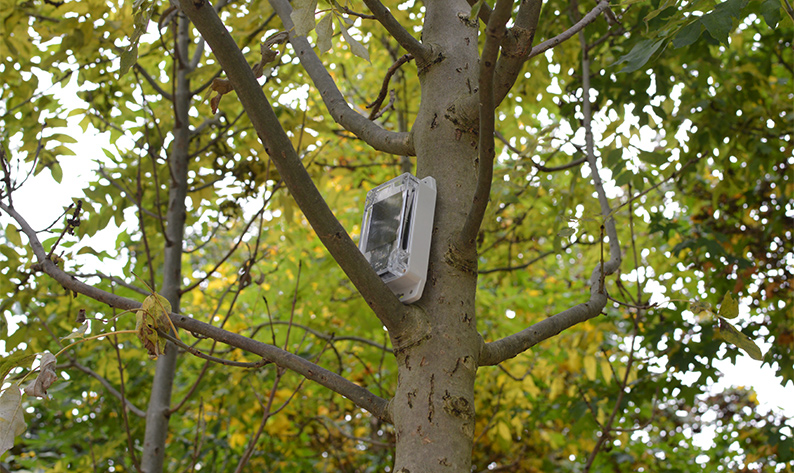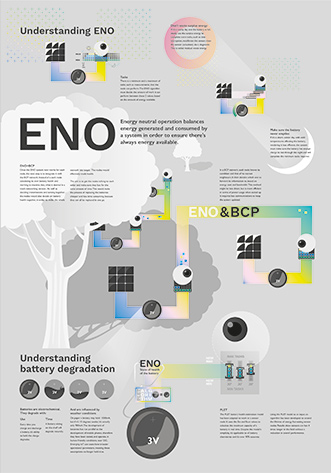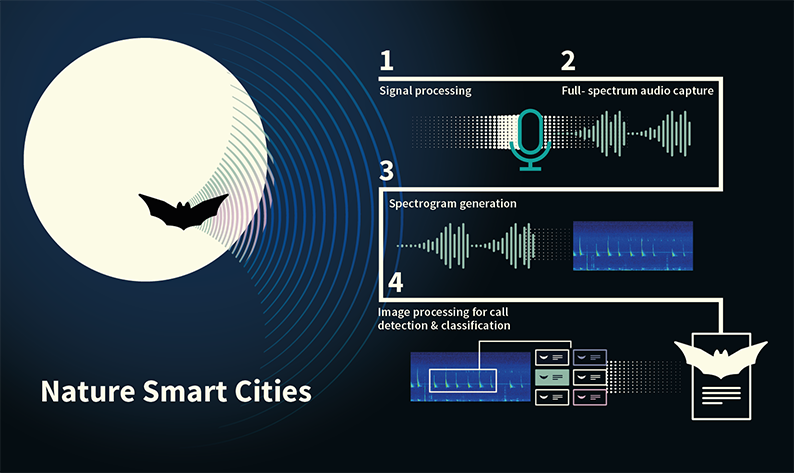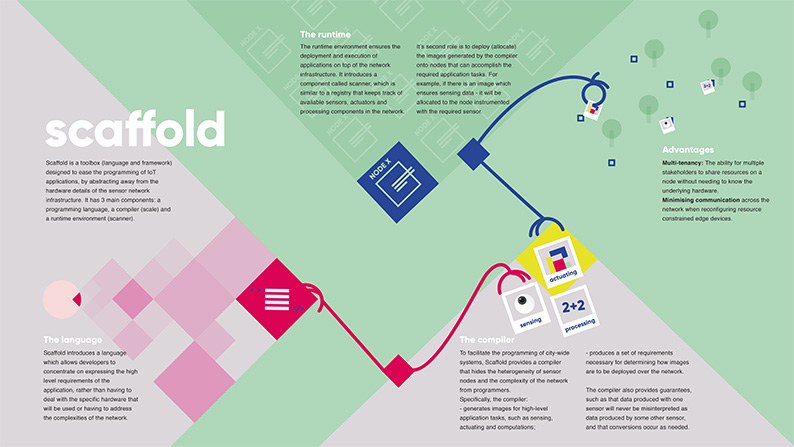Project Updates
Scaffold
Scaffold is a toolbox for developing IoT applications. It is comprised of a language and a framework, which aim to ease the process of programming networks of devices.
Scaffold takes the actions a given app must complete in order to achieve its purpose and assigns them to different nodes in a network. This means that more than one application can run on the network of nodes and any one node can perform tasks for several applications belonging to different owners. This is referred to as Multi-tenancy. Scaffold enables multi-tenancy by managing resources fairly and optimally and abstracting away from the hardware details of the nodes in the network. If you would like to find out more about Scaffold, click to enlarge the infographic above.
----------------------------------------------------------------------------------------------------------------------------------------------------------
Upcoming Pinsight deployment
The Pinsight team has been working with the Mill Road History Society in Cambridge with a view to create content for a deployment of Pinsight. The Pins will be hosted by 4 venues across Mill Road.
What is Pinsight? Pinsight is a network of physical, interconnected web of things devices that enable communities to share their knowledge about places with the general public by embedding it into real- world, physical contexts. Through an end-user friendly web interface people can co-create, edit and orchestrate interactive content through a spatially distributed network of physical pins in the built environment.For more information, the poster above details the development stages of Pinsight.
----------------------------------------------------------------------------------------------------------------------------------------------------------

ENO experiment deployed
The first nodes developed as part of the Energy neutral operations research conducted by Greg Jackson have been deployed in Queen Elizabeth Olympic Park.
What is ENO? Energy neutral operations deals with predicting the energy that goes into a system, in order to ensure that there’s always energy available. ENO came into being as a response to new problems created when energy harvesting replaced non-rechargeable batteries. If you would like to find out more about ENO, the infographic below explains basics of the concept.

----------------------------------------------------------------------------------------------------------------------------------------------------------

Nature Smart Cities
Nature Smart Cities brings together environmental researchers and technologists to develop the world’s first end-to-end open source system for monitoring bats, to be deployed and tested in the Queen Elizabeth Olympic Park.
How it works Echo Beach, the bat classification device, works like a Shazam for bats. It captures the soundscape of its surroundings through an ultrasonic microphone, then processes this data, turning it into an image. The machine learning algorithm developed by the UCL Centre for Biodiversity then scans the spectrogram image, identifies possible bat calls and classifies them, returning the species most likely to have made the call.
Why Measuring bat activity in QEOP provides a very interesting real world use case of processing large amounts of sensor data without the cost of sending it to the cloud - we call this high frequency processing at the edge.
Find out more
----------------------------------------------------------------------------------------------------------------------------------------------------------

Capstone Challenge
Future Cities Catapult and the Queen Elizabeth Olympic Park (QEOP) are inviting UK businesses to showcase connected products and services in this exciting development district and park. The QEOP and its surrounding locations are an ideal place to test new, community-focused technology interventions.
As part of the “Capstone” project, the Future Cities Catapult have worked with residents, workers and local stakeholders to uncover inspiring insights into real-life issues and opportunities and identified some key challenge areas via their research with residents, visitors and other stakeholders in and around the QEOP. To find out more about these challenge areas and how to apply, follow this link.

